- Homepage
- News and Features
- Why is the golf course closed again? How this winter's heavy rainfall has impacted courses everywhere
Why is the golf course closed again? How this winter's heavy rainfall has impacted courses everywhere
With water up to his chest, Jez Ward walked into the greenkeepers' shed at Renishaw Park to a scene of devastation. His office was flooded, years of paperwork washed away and thousands of pounds worth of equipment and machinery damaged irreparably.
“It’s pit of your stomach stuff,” said Jez, who found himself out of work when the operators of Renishaw Park decided the damage was too great to overcome and closed the club for good in December 2023.
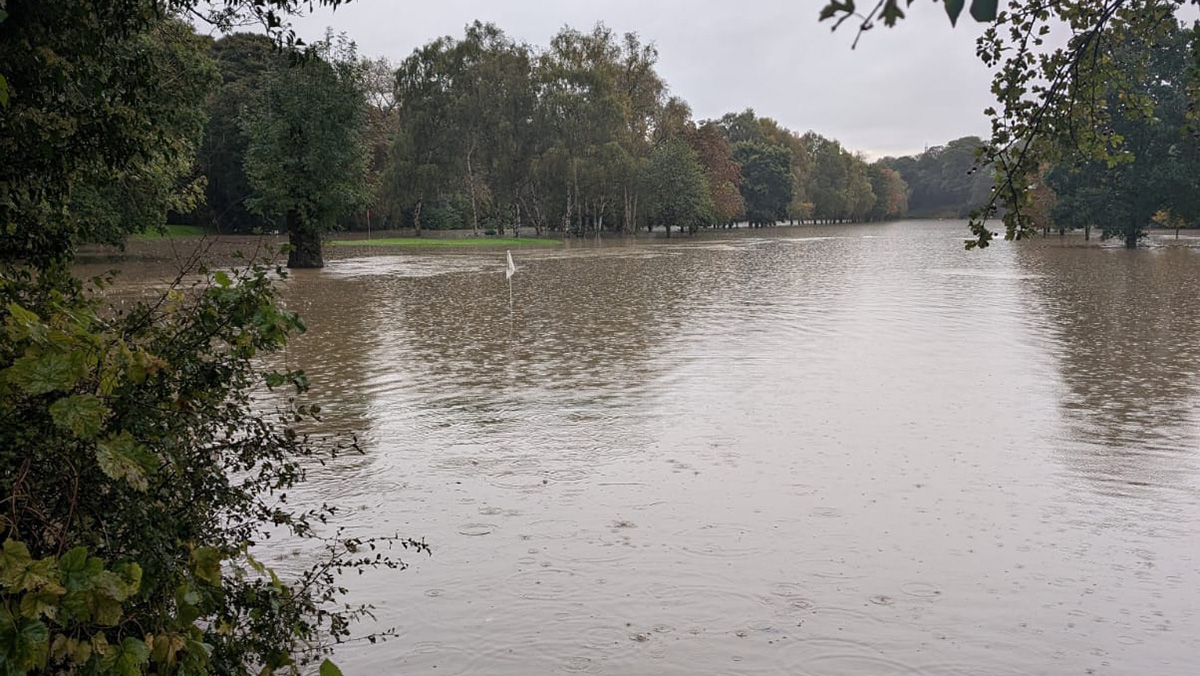
The winter of 2023 into 2024 has been marked by severe wet weather – in fact the downpours began in July and rarely let up. When you’re paying yearly fees for golf club membership, it can be frustrating not to be able to play for days or even weeks on end. But what’s actually going on at golf courses when the course closed signs are pulled out?
The data tells us that this year has generally been marked by heavier rainfall than usual. Weather expert Mark Hunt, a well-known figure in the turf industry, records rainfall levels in Oxfordshire and saw a 26% increase in 2023 from the previous year. According to his data, July alone saw 154% more rainfall than the previous year.
We surveyed greenkeepers around the UK and many also reported increased rainfall levels. At Hunley in North Yorkshire, rain has fallen on 75% of days this winter. “In my 11 years in my current post it’s only the second winter like this,” said Course Manager Greg Fitzmaurice MG.
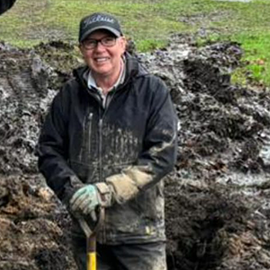
That’s a lot of rain and when you have a parkland course built on heavy clay, it becomes a problem
Andy Riley
Course Manager, The Worsley Golf Club
Peter Smith, course manager at Bathgate GC in West Lothian, has recorded rainfall figures every month since 2013 and has seen a steady increase in recent years, with winter 2023 into 2024 the peak. Between October and January, 611mm of rain fell on the course –the equivalent of 2.5 average-sized swimming pools.
Other golf courses around the country have seen similar increases, but it’s not just the quantity that is causing problems.
Alan Boyd is head greenkeeper at Bothwell Castle in South Lanarkshire. He explained: “It’s not the annual rainfall that causes us the problems but the downpours it comes in. We could handle 1-3mm every day no problem, but when you get 10-15mm a day, then 1-3mm per day for a week after it, that’s when we get problems.”
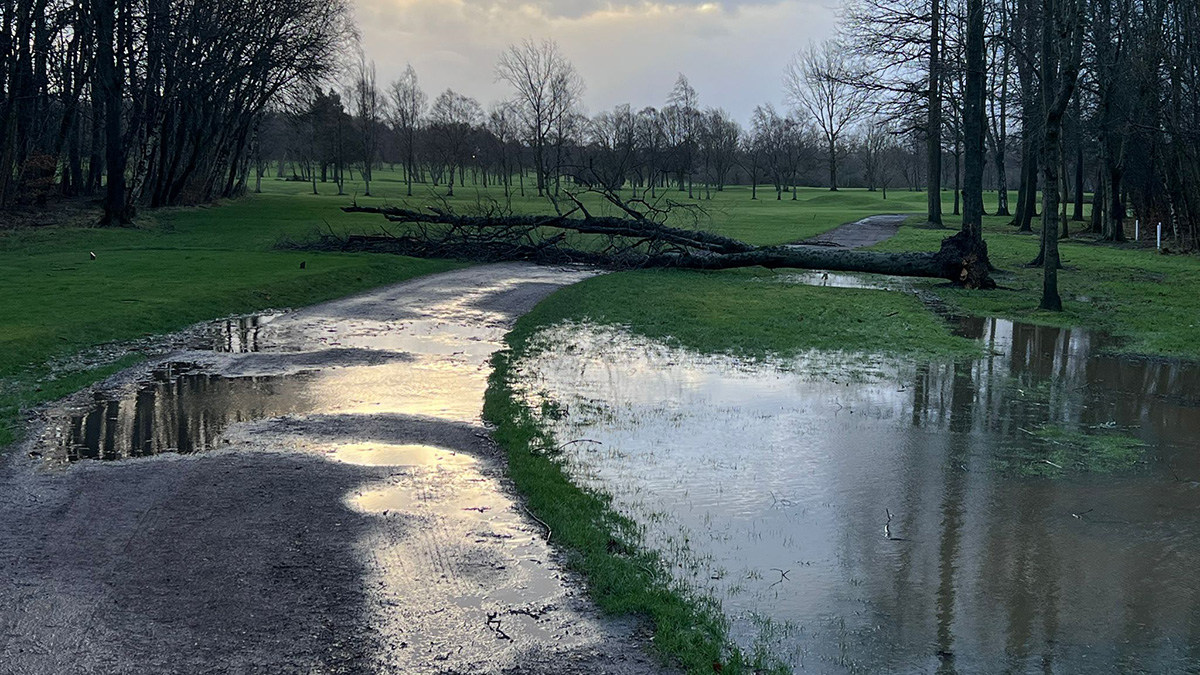
It has been estimated that heavy rainfall events now occur four times more often than they did before humans warmed the planet. These downpours raise the water table and consistent wet weather afterwards keeps it topped up, keeping golf courses wet and muddy and preventing greenkeepers from doing regular maintenance. A warmer, wetter climate also leads to increased disease incidence on turf, adding further challenges.
Andy Riley is course manager at Worsley Golf Club in Cheshire. He said: “Last Saturday we got 20mm of rain in four hours. That’s a lot of rain and when you have a parkland course built on heavy clay, it becomes a problem.”
Drainage systems on golf courses are often outdated and no longer fit for purpose. That’s why a major job for greenkeepers during periods of heavy weather is digging out channels, clearing them of debris and ensuring water can flow away, off the course. It’s mucky work – and there are few people around to witness it – but someone has to do it.
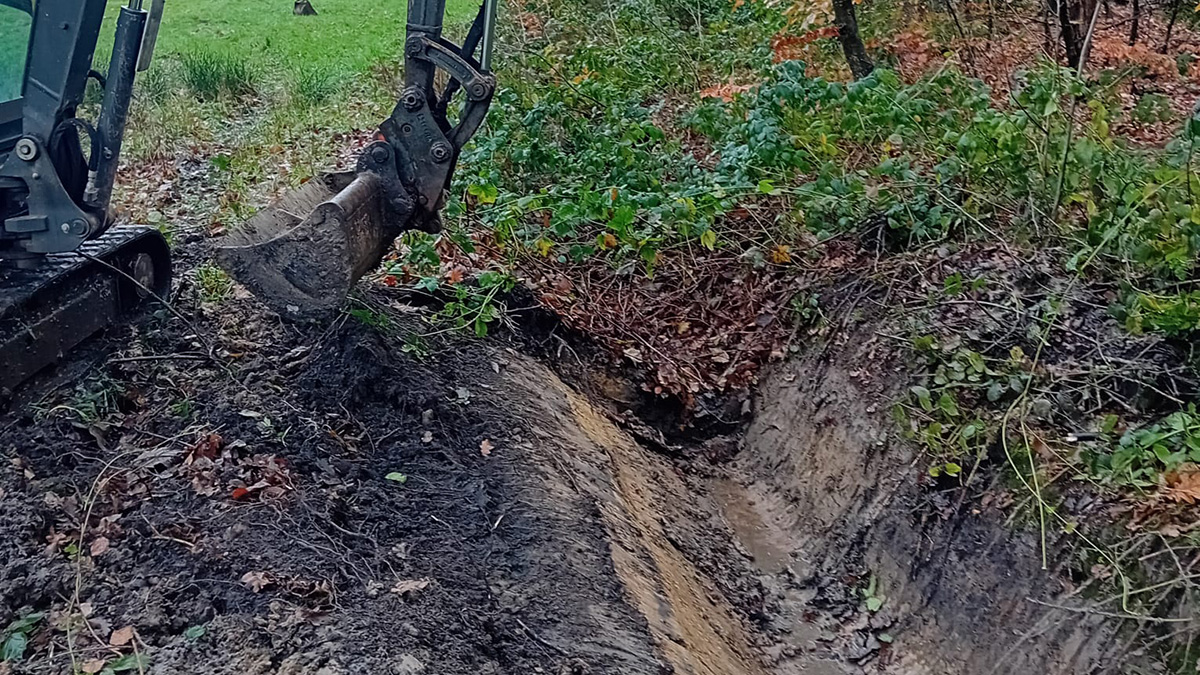
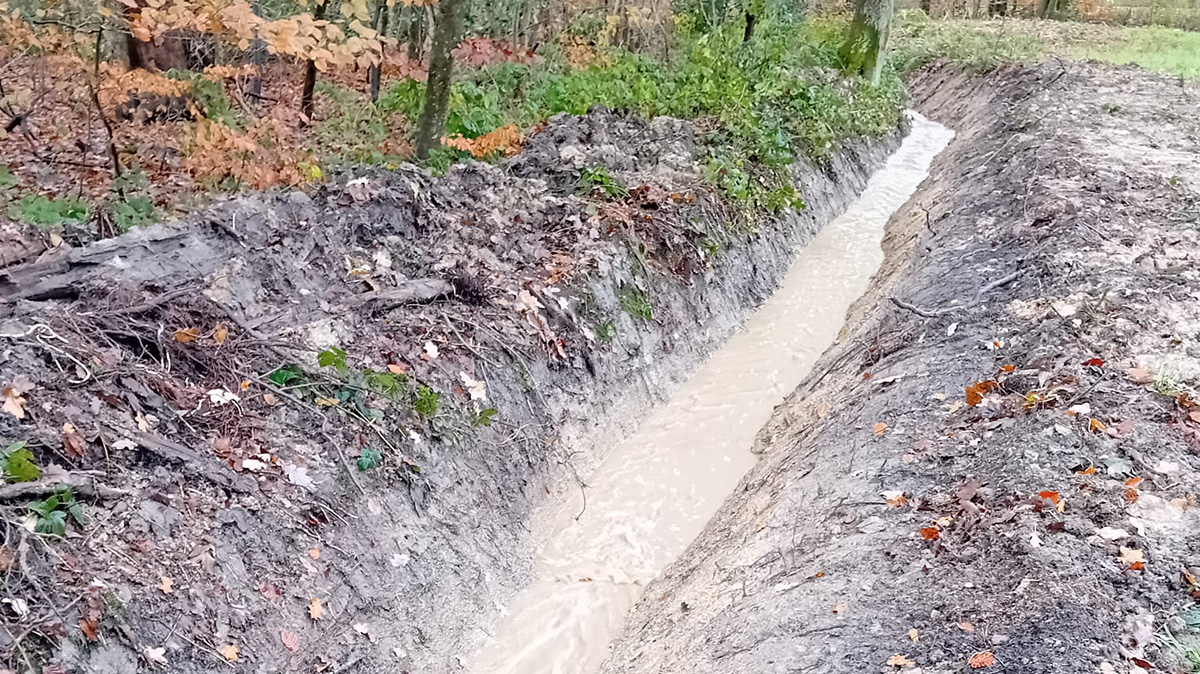
On many golf courses, what is ultimately required is serious investment in improving drainage capabilities, but this is an expensive endeavour – particularly when many golf courses also require investment in their irrigation system to help cope with the increasing incidences of prolonged drought during summer.
Paul Woodham is head of sustainable agronomy – Europe at The R&A. As one of the world’s leading agronomists, he has a better understanding than most of what happens to a course that’s struggling under heavy rainfall.
“Parkland courses with clay-based soils have been particularly vulnerable, even where there is drainage,” he said. “The volume of rain has commonly overwhelmed the natural drainage potential of soils and drainage systems, especially aging designs. In addition, surface infiltration and upper profile percolation rates will be massively compromised.

Greenkeeping teams will see the impact of the conditions even more than the golfer.
Paul Woodham
Head of Sustainable Agronomy - Europe, The R&A
“Greenkeeping teams will see the impact of the conditions even more than the golfer. Maintenance schedules will be severely disrupted, especially with the current conditions persisting well into the period when pre-season maintenance is due to commence.
“Other more routine operations have been affected. An example would be the inability to maintain a schedule for spraying. This may interfere with the planned applications, which are an important part of integrated disease management strategies. The golfer is therefore likely to see the impact of this with the risk of increased scarring or weakened turf.”
Eventually things will improve and after the water recedes, the greenkeepers will head out and survey the damage, which can be extensive and expensive to repair. If a layer of silt has formed over the playing surfaces, this can ‘cap’ the surface, killing the plant underneath and so it must be removed or brushed into the surface.
Likewise, grass that has spent time submerged underwater will be less healthy and will take time to recover. Muddy surfaces are liable to compaction, which not only cause the potential for slips and falls but also creates a poor-quality topsoil, severely affecting playing surfaces.
Greenkeepers will do their best to restore the course as quickly as possible, but in prolonged periods of wet weather, that continues to be a challenge. Golf courses are often spread across huge tracts of land – The Grange, Jez Ward’s new course, is located on a 360-acre site – and most greenkeepers use trackways or the rough to transport machinery around, rather than solid road surfaces. Greenkeepers don’t want to risk driving heavy machinery down sodden fairways as that will damage the turf, but they also often can’t use their regular out-of-play routes because the ground is unsafe.

We can’t get around to everywhere because we’d get stuck. I’m walking on fairways that are absolutely saturated with standing water.
Jez Ward
Course Manager, The Grange Golf Club
Were greenkeepers to use heavy machinery on a waterlogged course, there would be the possibility of serious injury. BIGGA’s health and safety partner, Citation, has offered advice on how to mitigate these risks.
“We can’t get around to everywhere because we’d get stuck,” said Jez. “I’m walking on fairways that are absolutely saturated with standing water. We sent someone out to do a bit of clean-up work on one of the greens and I said to him ‘you’ve got to be careful’, but he quickly got stuck and we’ve not been able to get out since.”
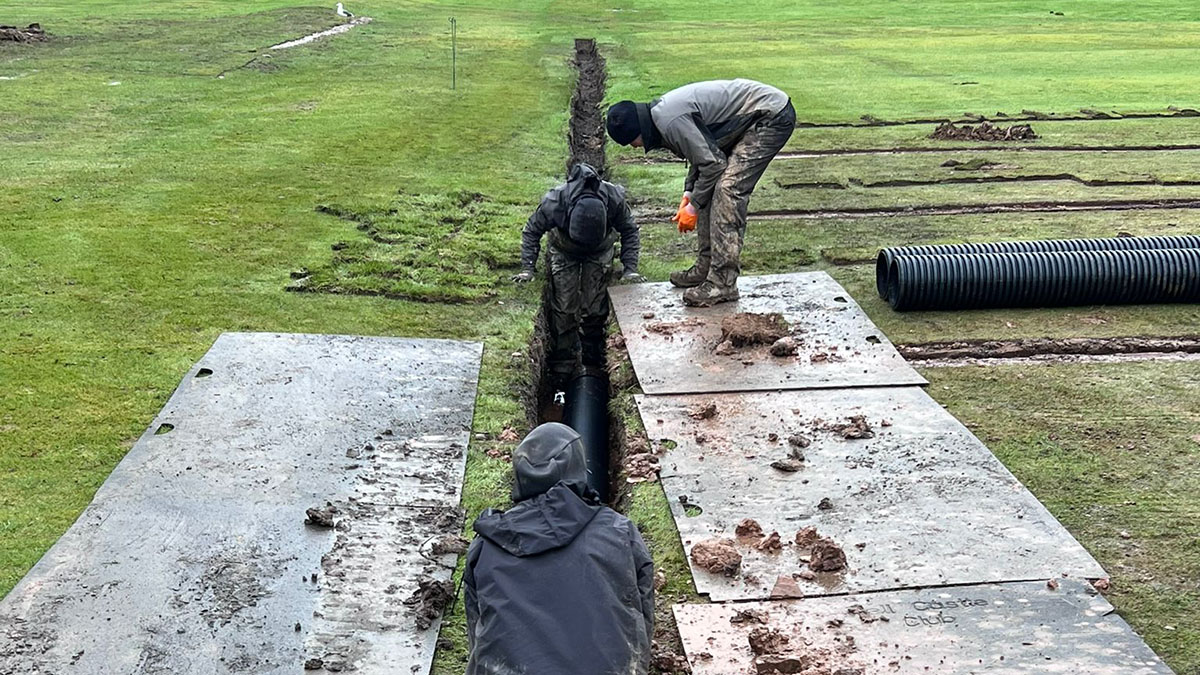
Golfers may criticise their greenkeepers when the ‘course closed’ signs come out. But the decision isn’t taken lightly and is always with the long-term health of the course in mind. The health and safety of golfers is also a serious consideration.
“I’m a golfer as well as a greenkeeper,” said Alan Boyd. “I grew up playing golf, so I know how the members feel. But as a greenkeeper I’ve had to build a thick skin to what the members feel because we’re doing it for the long-term health of the course. I don’t make the decision lightly, but it’s important to make a decision with your head rather than your heart.”

I don’t make the decision lightly, but it’s important to make a decision with your head rather than your heart
Alan Boyd
Course Manager, Bothwell Castle
The winter of 2023 into 2024 has tested everyone associated with the golf industry in the UK. Whether it is golfers frustrated at being unable to play or greenkeepers unable to maintain their golf courses and forced to watch as heavy rainfall causes untold damage to their hard work, this winter has been one to forget.
On behalf of our members, BIGGA asks for patience. Eventually the weather will improve and the damage will be repaired by expert greenkeepers who have the training and ability to overcome any challenge thrown at them. The damage won’t be repaired instantly, but your greenkeepers have the long-term health of the course at heart, so support them where you’re able to and look forward to longer days, better weather and some good golf.
Author

Karl Hansell
Karl has been head of communications for BIGGA since March 2016. His duties include editing the monthly Greenkeeper International magazine, in addition to other communications activities for the association.




